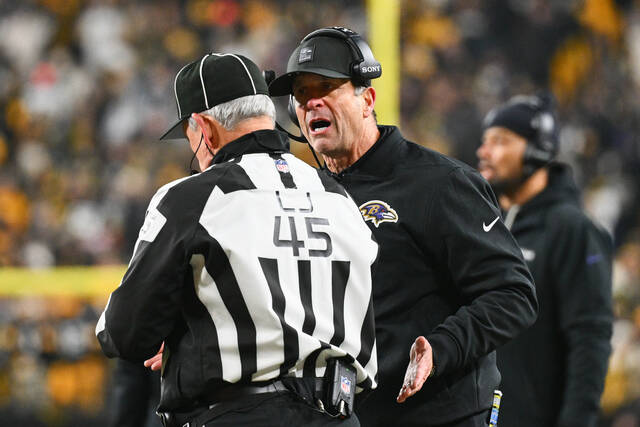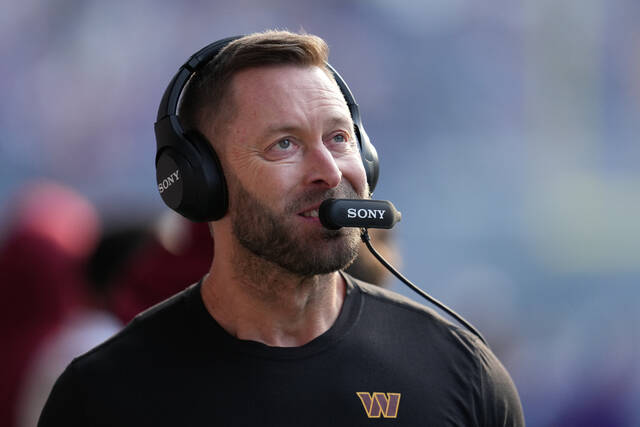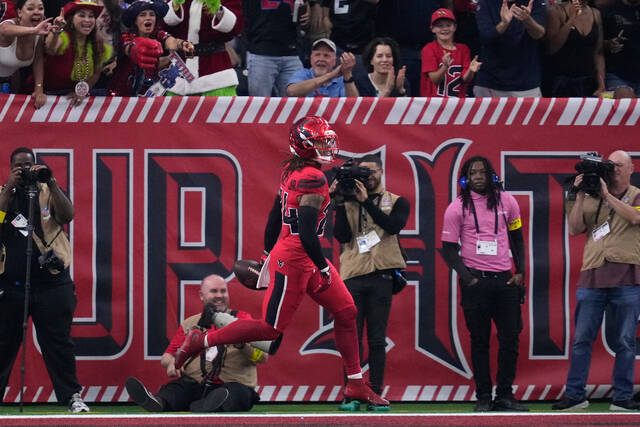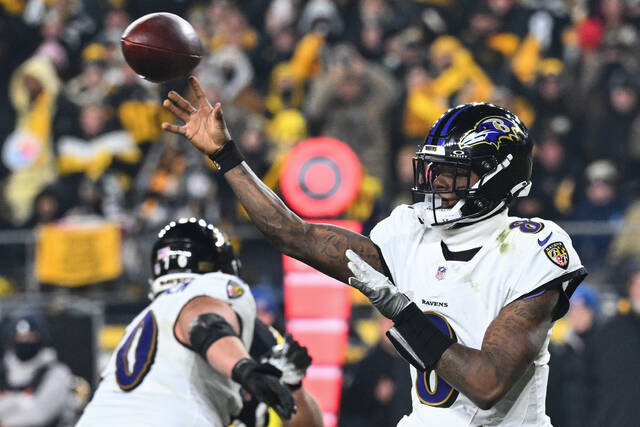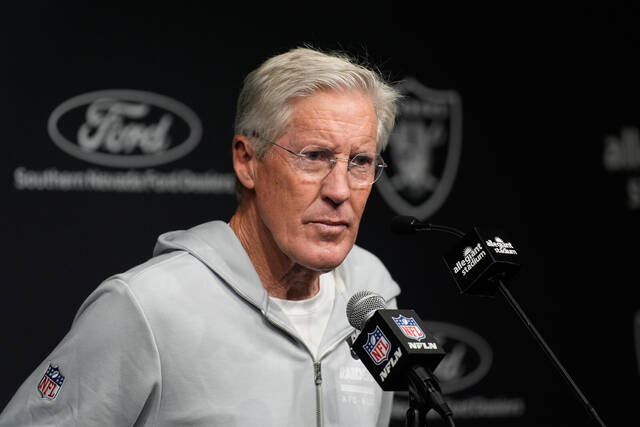Sports rights have always bounced among media companies, but there are so many more TV outlets today than 50 years ago.
With dozens of outlets across broadcast, cable and streaming, it can be challenging to figure out where your team might be playing week to week.
In an on-demand TV ecosystem in which viewers have embraced getting access to shows when and where they want them, ratings for linear TV are in a freefall. Media companies see linear TV — both broadcast and cable — as the past. They’re looking to streaming as the future even as most streaming services don’t yet make money. (Media companies will likely remedy that by raising rates for streaming services to the point that there’s little difference between the cost of the cable bundle and the cost of the eventual streaming bundle.)
So far, viewers’ access to the NFL hasn’t changed significantly beyond Amazon’s Prime Video taking over “Thursday Night Football” telecasts last year. Even then, TV stations in the home markets of the teams playing carry those local games.
Like last year, WPXI-TV will broadcast the two Steelers Thursday night games on Nov. 2 and Dec. 7.
Ratings for “Thursday Night Football” did not meet expectations in its first season, drawing an average of almost 4 million fewer viewers in 2022 than in 2021 when the games were on Fox/NFL Network. But perhaps viewers are getting more used to the idea of the NFL on a streaming platform: Ratings for the second-season premiere of Prime Video’s “Thursday Night Football” on Sept. 14 drew 15.1 million viewers, the biggest NFL audience to date on Prime Video.
This fall, viewers actually get access to more NFL games free over the air because ABC has opted to simulcast ESPN’s “Monday Night Football” due to the writers’ and actors’ strikes.
The NFL’s “Sunday Ticket” package, which includes every out-of-market Sunday game (except NBC’s “Sunday Night Football”), moved from DirecTV to streamer YouTube TV with a price increase of about $56 for the lowest-cost package.
For YouTube TV subscribers, the current cost to add Sunday Ticket is $349 for the 2023 season or $389 for NFL Sunday Ticket with NFL RedZone, which adds “whip around coverage” of every Sunday afternoon game.
Unlike in years past when you had to subscribe to DirecTV to get NFL Sunday Ticket, this year it’s possible to order the package a la carte, albeit at a higher price point. Non-YouTube TV subscribers can order NFL Sunday Ticket a la carte through YouTube’s Primetime Channels for $449 for the 2023 season ($489 with NFL RedZone). Another option, streaming service NFL+ ($7-$15 per month) makes live games available, but only on mobile devices.
“Everyone’s flipping out about this YouTube TV offering where you can have four games on the screen at once like you’re in a NASA command center,” said Ben Mathis-Lilley, a writer for Slate.com and author of the 2022 book “The Hot Seat: A Year of Outrage, Pride and Occasional Games of College Football.” “My perception is that NFL fans are excited about that and mostly happy with the availability. Where people are very unhappy always is college football.”
What makes college football more of a challenge for viewers to follow, he said, is that every conference sells its own TV rights.
“The NCAA as a national organization doesn’t control (college) football,” he said. “There’s no commissioner of college football and no rules about how much you can pay your coaches or how much you can spend on your stadium, so there’s this arms race that’s always going on between, for example, the Big Ten and the SEC, which are the two most powerful with the most lucrative teams.”
Not only do the different conferences compete to sell their TV rights for the highest price, there are no rules against them selling the TV rights to different companies.
“Now you have the Big Ten games on Fox, on CBS and you have (some) Big Ten games on (streaming service) Peacock exclusively that you can’t watch on regular NBC,” Mathis-Lilley said. “Fans certainly are frustrated with that, understandably. In addition to being like, ‘Shoot, do I even have that app? Am I subscribed to that?’ You have the effect of every week seeing your team on a different network with these new announcers who barely know who the players are. Everything is very fragmented across not just different channels but also different apps.”
Last year, Mathis-Lilley wrote for The New York Times about the challenges of being a college football fan and he particularly made note of the commercial bloat during college games.
“The networks are paying a lot of money for the rights to broadcast these games, and they say, ‘Well, we’re going to have to really load up the games with commercials in order to make our money back,’ ” he said. “And there’s no national agreement on how long a broadcast can last. So the games just keep getting longer and longer. Compared to 30 years ago, the broadcasts are 25 minutes longer on average, and its mostly because there (are) more commercials.”
Mathis-Lilley said that’s unlikely to change in the short-term because viewers remain committed to watching their favorite college teams.
“People say they’ll boycott sports, but they don’t. They want to watch the game,” Mathis-Lilley said. “There’s no economic incentive for anything to change.”
Over the longer term, there could be efforts to create more national agreements around college football: “Maybe in the long run some of this stuff gets brought under one roof and someone says, ‘Well, in the best interest of the sport, we’re going to try not to have games on 47 different networks that last for hours.’ ”
For the time being, the NFL will remain the easier-to-manage option for football fans.
“The NFL, in keeping with its reputation as a ruthlessly efficient business, they do have a pretty good product. You can turn it on, and the game’s gonna last about three hours. The pace of play moves along,” Mathis-Lilly said. “It’s not a bloated broadcast. And you know where to get it Sunday night, Monday night, Thursday night and then Sunday (afternoon).”



